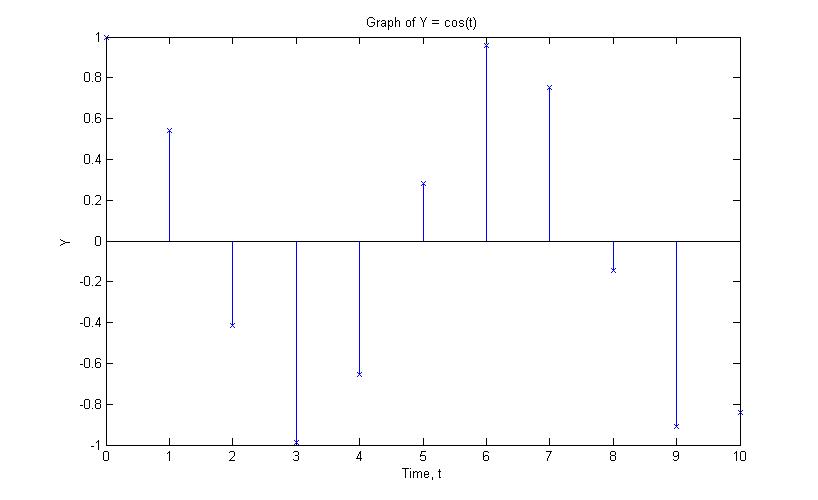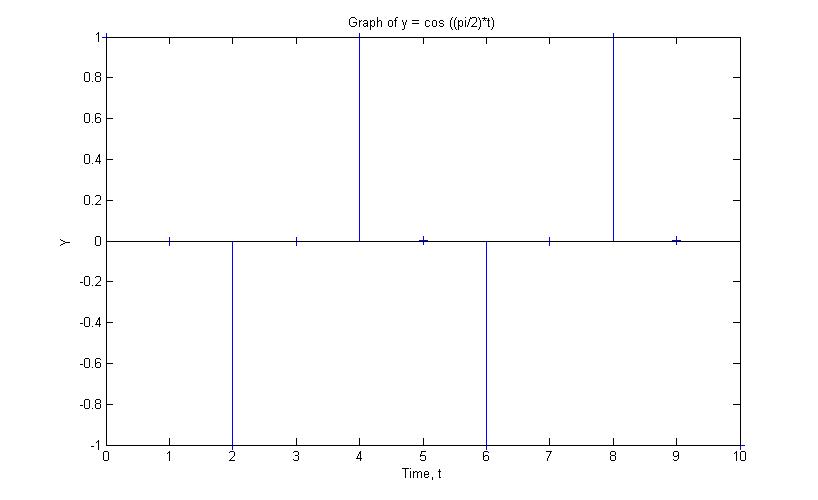Continuous to discrete time signal
I used the signal $ y = cos(n)\, $ as the signal of my graph
First lets look at sampling the graph at each 1 sec
The dots are scattered everywhere, and is not periodic since $ y[n] \neq y[n+k], k \neq \R \, $
However, once we made some modifications to the graph, turn it into $ y = cos( \frac{\pi}{2} n)\, $, and sample it at every 1 sec
The dotes goes periodically from 1 to -1 and back to 1, every 4 seconds.
As $ y[n] = y[n+k], k = \R \, $, the function is periodic



